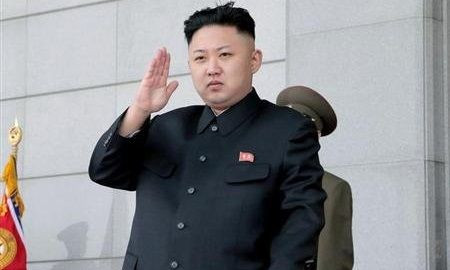Kim Jong Un Is Missing, But North Korea Still Has A Powerful Military -- That It Probably Can't Use

Despite worries that the disappearance of North Korean leader Kim Jong Un from public view over a month ago may presage a major attack on South Korea, experts say the secretive nation's ability to wage a real war is doubtful. Notwithstanding its history of aggression, nuclear arsenal and massive infantry, its inability to deliver nuclear bombs, inventory of obsolete equipment and potentially unreliable commitment of soliders suggest Pyongyang poses less of a threat than some fear.
Speculation as to why the nation's "Supreme Leader" has dropped out of sight include the possibility that he may be seriously ill or even that he has been ousted in a military coup. The latter may be unlikely, North Korea experts say, but in all probability the regime is in desperate economic straits. Given the nuclear-armed North’s propensity to make rash military decisions, such as the recent foray by a warship into South Korean-controlled waters, the situation has raised serious concerns about what Kim Jong Un’s absence means militarily.
However, if there has indeed been a power play to oust the 31-year-old dictator, or in any other case, the North Korean military would be unwise to launch an unprovoked attack on its southern neighbor, said Ted Gallen Carpenter, a senior fellow at the libertarian-leaning think tank Cato Institute and an expert on East Asia.
“As much as we can tell, the military’s primary objective is to preserve and enhance their own power and prestige in an isolated state,” Carpenter said. “They know they would lose a war on the Korean peninsula: Their equipment is obsolete, their training is garbage and they would be going up against a very capable South Korean military and the U.S.”
North Korea’s military might is often measured on its large army of around 690,000 with 4.5 million potential reservists, who would be trained and motivated to varying degrees. However, the equipment to complement those soldiers is well past its prime.
North Korea does indeed have literally thousands of aircraft, tanks and ships, making it one of the largest fighting forces on the planet, but they are now relics of a different era. The Soviet Union happily supplied the North with military equipment through the late 20th century, including Romeo-class submarines that were designed in the 1950s and commissioned in the '60s. The North's air force fields hundreds of aircraft including some relatively modern MiG-29 fighters supplied by the USSR, but none that can match the South's planes, much less the hypertechnological jets the United States has stationed in the South and nearby Japan. Many of Kim's warplanes are hopelessly outdated MiG-19s that predate even the Vietnam War. None are equipped with late-model precision air-to-ground weapons.
And not only that, but the equipment is largely unusable, even dangerous. In 2014 alone, the country has lost three MiGs; two patrol boats sank within days of each other in late 2013, killing dozens of sailors.
However, despite its aging military, the North can still be a highly capable adversary in a ground war. Artillery fire on South Korean islands in 2010 killed four people. South Korea knows that the North has around 13,000 artillery guns, some of which are more than able to hit Seoul, just 30 miles away from the border. South Korea's defense minister said in 2013 that its military could disable the artillery within five days, but not before the capital city sustained serious bombardment.
Forty-six South Korean sailors died in March 2010 after their warship was hit by what Seoul claimed was a North Korean submarine. Since 1999, the North and South have engaged in firefights at sea, and while the South has superior firepower, the North has benefited from the element of surprise. The two countries are not even formally at peace: The Korean War ended in 1953 with an armistice, not a peace treaty, so the North and South are still technically at war.
But Pyongyang has a trump card: It is a nuclear state, known to have tested atomic bombs. Still, it has a problem. Intelligence services believe North Korea has not yet managed to master the technology to build a nuclear-tipped warhead. In other words, it can test nuclear devices in a cave underground, but it has no weapons that can deliver them to an enemy.
Tuesday’s exchange of gunfire between the navies of the North and South suggest that little has changed in the North's hostile attitude, but that narrative of hostility is very much at odds with recent visits of high-ranking North Korean officials to the South in what appears to be a charm offensive. That has left onlookers confused about what the North has planned in the absence of Kim Jong Un, or even whether there has been any planning at all.
“It’s a matter of monitoring the situation, but we simply don’t have enough information yet to determine what has happened, much less what is likely to happen,” said Carpenter.
"An attack on South Korea would be suicidal, because a succession of U.S. administrations [have said] that if the North did launch an attack there would be no cease-fire solution, the North Korean regime would cease to exist,” Carpenter said. “And I don’t think China would step in to stop that. China has lost a lot of its patience with the North.”
© Copyright IBTimes 2025. All rights reserved.






















